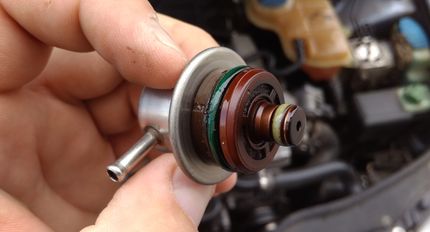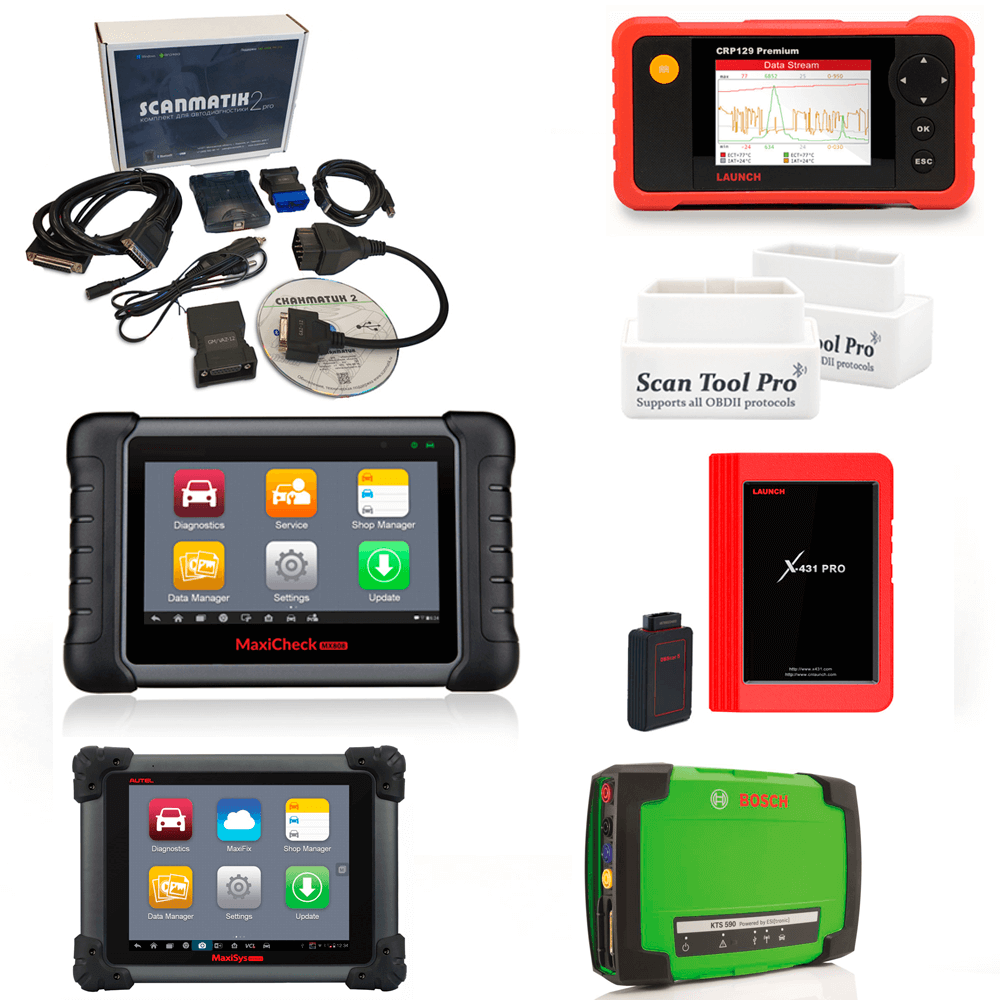
Damaged fuel pressure regulator - symptoms
Content
- Fuel pressure regulator - how does this component work?
- Damaged fuel pressure regulator - symptoms
- How does a regulator fail?
- Replacing the pressure regulator - how to carry it out?
- How to find a good mechanic if you notice symptoms of a broken regulator?
- How much does it cost to fix a regulator failure?
- How to avoid failure of the pressure sensor?
- Which car models are particularly vulnerable to fuel pressure regulator failure?
In this article, you will learn how a faulty fuel pressure regulator affects your car. Symptoms of failure are not always clear, so it is worth checking the condition of this small but important component on an ongoing basis.
Fuel pressure regulator - how does this component work?
The task of the regulator is to close and open the fuel supply to the injection system and it works directly with the intake manifold. The subassembly consists of a winding, a core with an electromagnet, a ball valve, and all this is enclosed in a sealed housing. Thanks to the fuel pressure sensor, the device knows exactly when it has exceeded the allowable value and opens the outlet valve through which unused fuel flows back into the tank.
Regulating the pressure between the intake manifold and the power supply keeps the engine running smoothly, which is why it's important to quickly diagnose a bad fuel pressure regulator. The symptoms and the entire malfunction should be repaired as soon as possible, because this will have a negative effect on many other components, and as a result, the engine may be flooded.
Damaged fuel pressure regulator - symptoms
The first tell-tale sign may be the smell of unburned fuel that you can smell from the exhaust pipe. However, the most common symptoms come from the engine side. Loss of power, problems with starting both cold and warm engine, but the Check Engine light should come on first. Other symptoms include engine jerking, choking, or stalling at idle. Diagnosing a bad fuel pressure regulator is not easy. Symptoms of this malfunction are deceptively similar to problems with the fuel pump, injection pump or a clogged fuel filter.
This simple and small unit fails quite rarely, every 200-250 thousand kilometers, but this part should be checked regularly. A defective fuel pressure regulator should be replaced with a new one as soon as possible, as it affects the operation of other critical components and may damage the catalytic converter or even cause it to explode. In case of damage or failure of this element, it must be considered that its replacement is associated with very high costs.
What can damage a fuel pressure regulator? Malfunction symptoms usually appear due to the use of low-quality fuel or impurities in the assembly block, injection rail or other element of the fuel system. Identical breakdowns also occur on vehicles with diesel engines, but in this case, the most common cause is the lack of hygiene in the workshop. The nozzles and the pressure regulator are very sensitive to even the smallest impurities.
How does a regulator fail?
Constantly high fuel pressure puts more stress on the injectors and unburned fuel cannot return to the tank. The on-board computer is designed to control the operation of the injection and reduce the fuel supply rate, but, unfortunately, it often fails, which leads to the engine being flooded with unburned gasoline.
Replacing the pressure regulator - how to carry it out?
Have you recognized the symptoms of a faulty fuel pressure regulator in your car? Now what? First of all, you need to know that this component cannot be repaired. The only way out is to replace the part with a new one. Repair is not difficult, but you should remember a few basic rules. Purchase special o-rings that seal the system, because it is not enough to replace only a damaged fuel pressure regulator. Sometimes symptoms may indicate a more serious problem that requires professional service.
If you prefer to do the repair yourself, disconnect the battery clamps first. After disassembling the regulator, be sure to seal the entire system so that impurities do not get into it and the whole situation does not happen again. Maintenance must be carried out in a clean room with special care. After installing the new part, start the engine and check for leaks or abnormal operation.
How to find a good mechanic if you notice symptoms of a broken regulator?
The malfunction is simple to repair, but work should be approached with special care, because otherwise such an event can quickly occur. Finding a reliable and honest mechanic is not an easy task. If you want to be sure of the quality of the services provided, you should use the services of a proven service with good reviews, the best authorized service center for this brand. Unfortunately, ASO repairs are also associated with higher costs.
If you want to save money, you can ask friends or look for a specialist yourself. It is worth taking into account the opinions and ratings given to the company by other users, thanks to which you will minimize the risk of encountering an unscrupulous service specialist.
How much does it cost to fix a regulator failure?
As we already mentioned, only the replacement of the entire part is possible. Prices for components will vary depending on the year of manufacture, make and model of the car, but most often it is from a few dozen to about three hundred zlotys. This, of course, is very revealing information, the cost may be higher in the case of luxury models. Large price ranges arise in the case of the exchange office itself. Depending on the car model, it can range from 20 euros to even 5.
How to avoid failure of the pressure sensor?
The life of the component is estimated at 200-250 thousand kilometers and with the appropriate precautions, it is likely that only after driving this distance does the risk of damage to the fuel pressure regulator increase. Symptoms of a damaged sensor show up quickly, but you have time before further damage occurs. If you want to maximize the life of your parts, fill only quality fuel at recommended filling stations. Avoid dubious small establishments and gasoline from unreliable sources.
Regular visits to the mechanic will allow you to detect breakdowns in advance, as well as extend the life of parts and the entire car. Whenever possible, use only trusted and reliable authorized service centers or reputable technicians. Keep in mind that maintenance and the money spent on it is an investment in your safety and time, but it also protects you from the higher costs associated with unexpected failures.
Which car models are particularly vulnerable to fuel pressure regulator failure?
No relationship was observed between the number of sensor failures and specific vehicle models. This defect affects both luxury and simpler models. In this case, caring for the general technical condition of the car is of key importance. Do repairs yourself only if you are sure that you can handle it and are sure of the source of the problem, that is, a faulty fuel pressure regulator. The symptoms are deceptively similar to those that occur with problems with other components.
The fuel pressure regulator is a small component, but it can cost a fortune to replace, so it's worth maximizing its lifespan.
